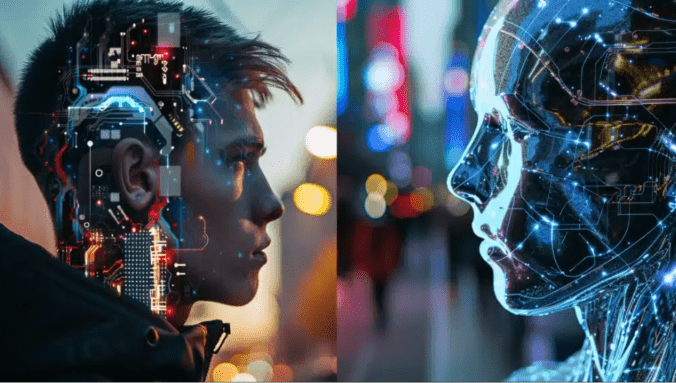Deep learning, a subset of machine learning, represents one of the most groundbreaking advancements in Artificial Intelligence (AI). By leveraging artificial neural networks with multiple layers, deep learning mimics the way humans process information, learn from experiences, and make decisions. Its applications are transforming industries, enabling breakthroughs in fields ranging from healthcare and finance to entertainment and security.
What is Deep Learning?
Deep learning focuses on building and training artificial neural networks to process and analyze vast amounts of data. These networks are inspired by the human brain, with layers of interconnected nodes (neurons) that work together to learn patterns, make predictions, and adapt to new information.
Key Characteristics of Deep Learning
- Automatic Feature Extraction: Unlike traditional machine learning, where features must be manually defined, deep learning automatically identifies features from raw data.
- Hierarchical Learning: The models learn features hierarchically—from simple patterns like edges in images to complex objects or relationships.
- Scalability: Deep learning performs exceptionally well with large datasets, becoming more accurate as the volume of data increases.
Training Deep Learning Models
The process involves two critical stages:
- Forward Propagation: Data flows through the network, layer by layer, until it generates an output.
- Backpropagation: Errors are calculated and propagated backward through the network to adjust weights and biases, improving the model’s performance.
Optimization algorithms like stochastic gradient descent (SGD) and Adam are used to minimize the loss function, ensuring the model learns effectively.
Deep Learning in Healthcare
Deep learning is revolutionizing healthcare by enabling precision medicine, accelerating drug discovery, and improving diagnostics.
Diagnostics and Imaging
Deep learning models analyze medical images such as X-rays, CT scans, and MRIs with high accuracy. For instance:
- Cancer Detection: DeepMind’s AI models detect early signs of breast cancer and outperform radiologists in some studies.
- Cardiology: Algorithms can predict heart disease by analyzing echocardiograms and electrocardiograms (ECGs).
- Dermatology: AI systems identify skin conditions like melanoma from photographs with impressive precision.
Drug Discovery
Traditional drug discovery methods are time-consuming and expensive. Deep learning accelerates this process by:
- Analyzing chemical structures and predicting how molecules will interact with biological systems.
- Identifying promising drug candidates using algorithms trained on large datasets of existing compounds.
Personalized Medicine
Deep learning models use genetic, environmental, and behavioral data to recommend tailored treatment plans. This personalized approach improves patient outcomes by reducing the trial-and-error process in medicine.
Deep Learning in Autonomous Vehicles
Autonomous vehicles are among the most visible examples of deep learning in action.
Object Detection and Recognition
Deep learning enables self-driving cars to identify objects such as pedestrians, cyclists, traffic signs, and other vehicles. Convolutional Neural Networks (CNNs) are central to processing the visual data captured by cameras.
Real-Time Decision Making
Autonomous vehicles rely on deep learning to make split-second decisions. For example:
- Path Planning: Recurrent Neural Networks (RNNs) process sensor data to determine the safest and most efficient route.
- Obstacle Avoidance: AI systems predict potential hazards and adjust speed or direction accordingly.
Enhancing Safety
Features like adaptive cruise control, lane-keeping assistance, and collision avoidance are powered by deep learning, making roads safer for everyone.
Deep Learning in Natural Language Processing (NLP)
Deep learning has revolutionized how machines understand and process human language, enabling advancements in Natural Language Processing (NLP).
Chatbots and Virtual Assistants
Chatbots like ChatGPT and virtual assistants such as Siri, Alexa, and Google Assistant use deep learning to:
- Recognize speech and text.
- Understand context and intent.
- Generate relevant and coherent responses.
Sentiment Analysis
Deep learning analyzes text to detect emotions and opinions, helping businesses understand customer feedback. For instance:
- Social media sentiment analysis informs companies about public perception of their brands.
- Product reviews are analyzed to improve customer satisfaction.
Machine Translation
Tools like Google Translate leverage sequence-to-sequence models and attention mechanisms for accurate, context-aware translations across multiple languages.
Deep Learning in Finance
Finance is one of the industries where deep learning has had a profound impact.
Fraud Detection
Deep learning algorithms detect anomalies in transactional data to identify fraudulent activities. For example:
- Real-time monitoring systems flag unusual spending patterns.
- Predictive models evaluate the likelihood of fraud in online transactions.
Algorithmic Trading
Deep learning powers trading algorithms that analyze market data, identify trends, and execute trades. These systems improve decision-making by processing data faster than humans.
Credit Scoring
Deep learning models assess borrowers’ creditworthiness by analyzing financial histories, enabling more accurate and fair lending practices.
Deep Learning in Entertainment
The entertainment industry uses deep learning to personalize experiences and create immersive content.
Personalized Recommendations
Streaming platforms like Netflix, YouTube, and Spotify use deep learning to analyze user preferences and recommend content. These models consider viewing history, ratings, and engagement patterns to curate personalized suggestions.
Game Development
Deep learning enhances gaming by:
- Creating realistic environments and adaptive characters.
- Developing AI opponents that learn and respond to player behavior.
- Powering cloud gaming platforms for seamless experiences.
Content Creation and Enhancement
Deep learning algorithms can:
- Upscale video resolution (e.g., 4K to 8K).
- Restore old or damaged films.
- Generate AI-driven art and animations.
Deep Learning in Retail and E-Commerce
Visual Search
Platforms like Pinterest Lens enable users to find products by uploading images. Deep learning identifies patterns and features in images to deliver similar or exact matches.
Inventory Optimization
Retailers use deep learning to predict demand, optimize inventory levels, and reduce overstock or shortages. For example, Amazon employs AI to manage its massive supply chain efficiently.
Dynamic Pricing
Deep learning models analyze market trends, demand patterns, and competitor pricing to adjust product prices dynamically. This ensures competitive pricing and maximizes revenue.
Deep Learning in Manufacturing
Quality Control
Deep learning enhances quality control by identifying defects in real-time during production. For instance, automobile manufacturers use AI systems to inspect parts for cracks or deformities.
Predictive Maintenance
Sensors and deep learning models predict equipment failures, allowing proactive maintenance and reducing downtime. This approach improves operational efficiency.
Robotics
Industrial robots equipped with deep learning algorithms adapt to tasks like assembly, welding, and packaging. These robots enhance productivity and reduce errors.
Deep Learning in Security
Facial Recognition
Deep learning systems identify individuals in surveillance footage or unlock devices through facial authentication. These systems are used in security, law enforcement, and personal electronics.
Cybersecurity
Deep learning models analyze network traffic to detect and prevent cyber threats. They identify patterns that indicate potential breaches, safeguarding sensitive data.
Biometric Authentication
AI-driven biometric systems improve accuracy in fingerprint, voice, and iris recognition, enhancing security across industries.
Challenges in Deep Learning
Despite its potential, deep learning faces several challenges:
Data Dependency
Deep learning models require vast amounts of high-quality data to perform well. Limited or biased data can lead to inaccurate predictions.
Computational Costs
Training complex models demands significant computational resources, including high-performance GPUs or TPUs. This can be costly and time-intensive.
Lack of Explainability
Deep learning models are often considered “black boxes,” as their decision-making processes are not easily interpretable. This limits their adoption in fields requiring high transparency, such as healthcare and finance.
Ethical Concerns
Biases in training data can lead to unfair outcomes, such as discriminatory hiring practices or flawed criminal justice decisions. Ensuring fairness and accountability is critical.
FAQs
What is deep learning?
Deep learning is a subset of machine learning that uses artificial neural networks with multiple layers to analyze data, identify patterns, and make predictions.
How is deep learning used in healthcare?
Deep learning is used in diagnostics, drug discovery, and personalized medicine to improve patient care and accelerate medical advancements.
What are the challenges of deep learning?
Challenges include high data requirements, computational costs, lack of explainability, and ethical concerns.
How does deep learning benefit autonomous vehicles?
Deep learning enables object detection, path planning, and safety features like collision avoidance in autonomous vehicles.
What industries benefit from deep learning?
Healthcare, finance, entertainment, manufacturing, retail, and security are some of the industries leveraging deep learning.



